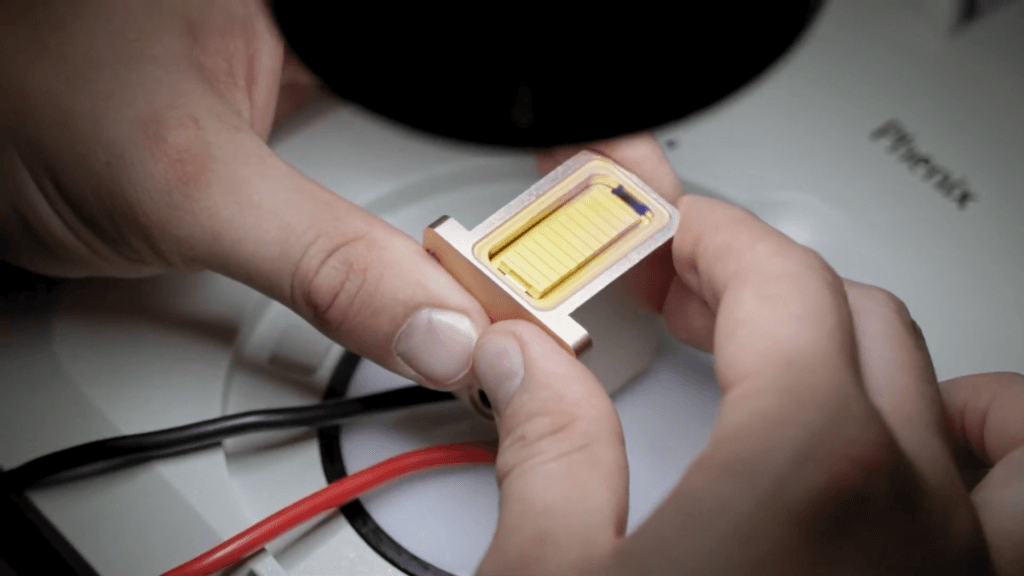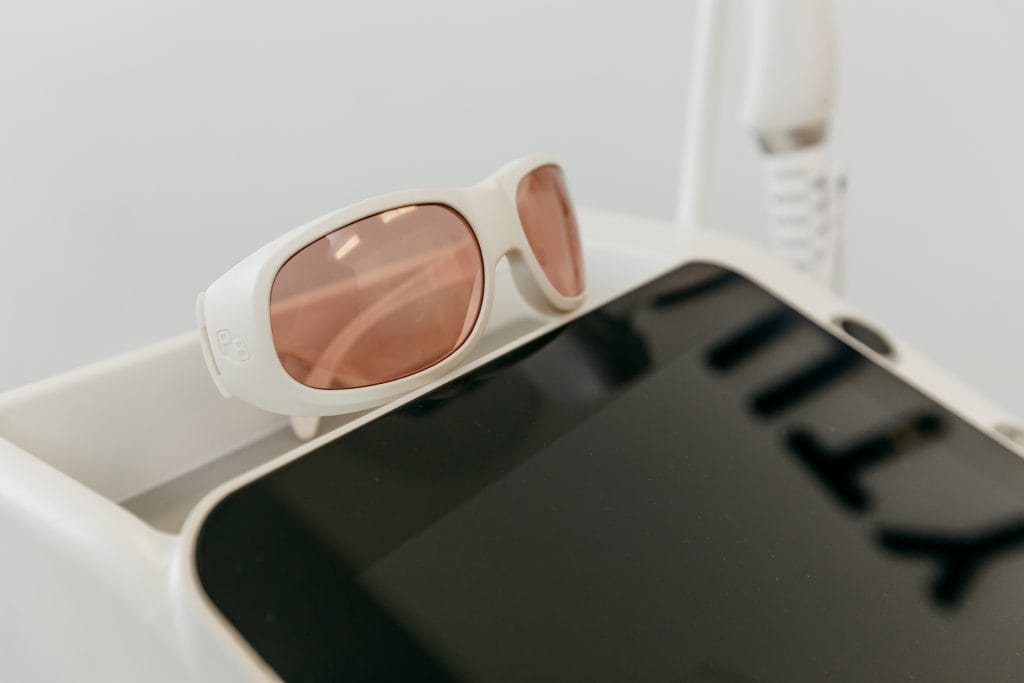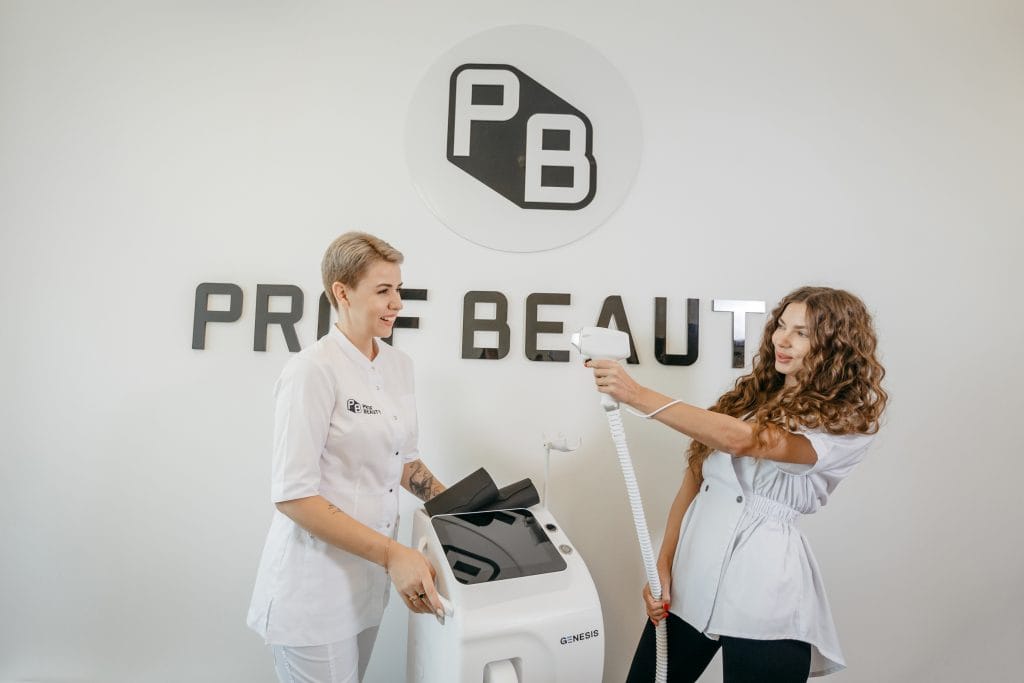Introduction to Diode Laser
The diode laser is a technology increasingly used in the aesthetic and medical fields due to its effectiveness and safety. This type of laser uses a semiconductor as the light emission source and is characterized by its ability to operate at specific wavelengths, allowing for remarkable precision when hitting the desired targets on the skin, such as hair follicles and unwanted pigmentation.
The diode laser’s main applications include hair removal, facial rejuvenation treatments and the reduction of blemishes and acne marks. Its precision and efficiency in treating hair follicles make it a superior choice for laser hair removal. In addition, in rejuvenation treatments, the diode laser helps to stimulate collagen and improve the overall appearance of the skin, providing results that other technologies tend to achieve with much more difficulty.
The growing popularity of the diode laser in modern clinics can be attributed to the combination of effective results, reduced recovery time and minimized discomfort for the patient. Aesthetics and dermatology professionals especially value this laser’s ability to offer personalized treatments, adjusting parameters according to each patient’s specific needs. This results in a safer and more efficient approach, with less risk of complications.
In addition, diode laser technology continues to evolve, bringing innovations that further improve the effectiveness and safety of treatments. Because of these advantages, having a diode laser device in your clinic can not only improve patient satisfaction, but also broaden the range of services offered, making it a significant competitive differentiator.
Diode Laser Operating Principle
The diode laser works by emitting light at specific wavelengths, usually between 800 and 810 nanometers, which are efficiently absorbed by the melanin present in hair follicles and other target structures. This technology is based on the process of selective photothermolysis, where the laser energy is selectively absorbed by the pigments in the target tissue, without causing damage to the surrounding tissues. This selectivity is achieved by adjusting the laser parameters, such as pulse duration and fluence, to optimize energy absorption by the specific target.
The interaction of laser light with the target tissue consists of the selective heating of cells containing melanin pigment, which results in the destruction of these cells. When the light is absorbed by the melanin, it is converted into heat, which must be sufficient to damage the hair follicle without affecting the surrounding skin. The effectiveness of this process depends on several factors, including the density of melanin in the follicle and the depth of the hair in the skin. An integrated cooling system is often used to protect the epidermis during treatment, providing patient comfort and minimizing the risk of burns or other skin lesions.
The precision of the diode laser is crucial. Thanks to advanced technology, it is possible to adjust the energy and duration of the pulses with high precision, which allows treatments to be tailored to the individual needs of each patient. In addition, safety is a primary consideration when using diode lasers. Most modern equipment comes equipped with multiple safety mechanisms, such as skin contact sensors and real-time monitoring systems, ensuring that treatment is carried out effectively and safely.
Considering these aspects, it is clear that diode laser technology offers a highly effective and safe method for aesthetic and dermatological procedures. Its ability to provide precise and consistent results makes it an excellent choice for clinics looking to offer high-quality treatments to their patients.
Advantages of the Diode Laser Compared to Other Laser Types
The diode laser has made a name for itself in the field of aesthetics and dermatology due to its numerous advantages over other types of laser, such as Alexandrite and Nd:YAG. One of the main advantages of the diode laser is its effectiveness in treating different skin types. While lasers such as Alexandrite are known to be more effective on light skin, the diode laser has wavelengths that allow it to be applied to a wider range of skin phototypes, including darker skin. This makes the diode laser a versatile and inclusive choice for clinics that cater to a diverse population.
In addition, the diode laser is recognized for providing a significant reduction in the risks and discomfort associated with treatment. Its advanced technology allows for precise control of the energy emission, which contributes to a lower probability of causing damage to the surrounding skin. As a result, diode laser treatment tends to be less painful and recovery is generally quicker compared to the use of lasers such as Nd:YAG. This not only improves the patient experience, but also increases satisfaction with the results obtained.
Another significant benefit of the diode laser is its efficiency in long-term hair removal treatments. Compared to Alexandrite, which can require several sessions to achieve similar results, the diode laser often achieves permanent results with a smaller number of sessions. This efficiency translates into time and cost savings for patients, as well as optimizing the schedule of clinics that use this technology.
In short, the advantages of the diode laser, such as its suitability for different skin types, reduced risks and discomfort, and efficiency in permanent hair removal treatments, make this technology a superior choice compared to other types of laser. These characteristics make the diode laser an indispensable tool for clinics looking to offer advanced and satisfactory treatments to their patients.
Common Diode Laser Applications
The diode laser is a technology widely used in aesthetic and medical clinics due to its high efficiency and versatility. Among its most common applications is hair removal. This procedure uses concentrated beams of light to target and destroy hair follicles, resulting in a permanent reduction in hair growth. Unlike traditional methods such as waxing or shaving, the diode laser provides long-lasting results and is suitable for all skin types, including darker skin.
Another frequent application is skin rejuvenation. The diode laser stimulates the production of collagen and elastin, essential fibers for keeping the skin firm and youthful. This treatment is effective in reducing fine wrinkles, expression lines and acne scars, providing a smoother and more uniform appearance. In addition, the procedure is minimally invasive and requires little recovery time, making it an attractive option for those looking to improve facial aesthetics without resorting to more aggressive interventions.
The diode laser is also commonly used to treat pigmented lesions such as sun spots, melasma and hyperpigmentation. The laser energy is absorbed by the dark pigments in the skin, fragmenting them and allowing them to be removed by the body’s immune system. This treatment is effective in evening out skin tone and can be adjusted to treat various pigmentary conditions with precision.
In summary, the diode laser offers a range of effective and safe applications, including hair removal, skin rejuvenation and the treatment of pigmented lesions. Its versatility and significant results make this technology a valuable choice for clinics wishing to offer high-quality treatments to their patients.
Pre- and Post-Treatment Care and Procedure
Treatment with a diode laser begins with an initial consultation, where the professional assesses the patient’s skin and hair type. During this consultation, expectations and possible results are discussed, as well as any contraindications and precautions. This assessment is crucial to defining the appropriate laser parameters and guaranteeing the treatment’s effectiveness and safety.
Before the procedure begins, it is important to prepare the area that will receive the diode laser. It is recommended that the skin is clean and free of any type of product, such as creams or oils. In addition, it is common for the hair to be trimmed to a certain height, preventing it from being too long, which could interfere with the laser’s effectiveness.
During laser application, the professional uses a specific device that emits pulses of concentrated light, focused on the hair follicles. The patient may feel slight discomfort or a sensation of heat, but most modern machines have cooling systems that minimize pain and protect the skin. The application time varies depending on the area treated, and can last from a few minutes to an hour.
Adherence to post-treatment care is as important as the application of the laser itself. Immediately after the session, it is common for the skin to show redness and slight swelling, symptoms that usually disappear within a few hours. To mitigate these effects and promote healing, it is recommended to use cold compresses and gentle moisturizers.
Avoiding sun exposure is essential in the first few weeks after diode laser treatment. The use of sunscreen is essential to prevent spots and burns. In addition, it is advisable to avoid activities that can heat the skin too much, such as hot baths, saunas, and intense exercise.
Following all the guidelines provided by the professional ensures not only the effectiveness of the treatment, but also the safety and maintenance of long-term results.
Results and Effectiveness of Diode Laser Treatment
Diode laser treatment has been shown to be highly effective in a variety of dermatological and aesthetic applications. Scientific studies and clinical reports indicate that this method offers significant results in both the short and long term. One of its main advantages is the removal of unwanted hair with a high success rate. According to research, patients usually experience up to a 90% reduction in hair after a complete cycle of sessions.
The effectiveness of diode laser also extends to the uniformity of skin pigmentation and the treatment of superficial vascular lesions. Patients with melanin hyperpigmentation and erythema have reported substantial improvements in skin tone and texture, increasing confidence and satisfaction with their appearance. This laser is especially effective for darker skin, where other methods may be less safe or effective.
Success stories further illustrate the benefits of this technology. For example, a dermatological clinic in São Paulo reported that among patients treated with diode laser, 85% showed significant improvement in less than six months. Individual patient reports highlight the absence of pain during the sessions and the rapid post-treatment recovery as important differentials. In addition, the low incidence of side effects, such as burns or hypopigmentation, reinforces the safety of the procedure.
In the long term, diode laser treatment has a sustainable efficacy, which means that the results obtained are long-lasting and less likely to reverse compared to traditional hair removal and skin care methods. Patients usually only require sporadic maintenance sessions, since hair growth and injury recovery is significantly reduced.
In this way, incorporating diode laser into your clinic not only responds to the quality and safety demands of patients, but also reinforces the establishment’s reputation as a center of excellence in aesthetic treatments.
Investment and Return Considerations for Clinics
Investing in diode laser equipment is a strategic decision that requires careful analysis of the costs and benefits. Initially, the acquisition cost may seem high, but this expense should be seen as an investment in advanced technology, which offers significant returns in the medium and long term. Quality equipment varies in price, depending on its features and brand, but it is important to consider that more advanced devices tend to provide better results and, consequently, greater customer satisfaction.
In addition to the acquisition cost, there are also expenses for maintenance and staff training, which must be integrated into financial planning. Diode laser equipment needs regular maintenance to ensure its proper and safe operation. However, many vendors offer maintenance plans that can be included in the purchase package, making it easier to forecast spending. As for training, investing in the qualification of the professionals who will operate the equipment is crucial to maximize the benefits of diode laser technology and minimize risks.
The benefits of diode laser for clinics go beyond the direct financial return. Technology has the potential to attract new customers, who are eager for safe, effective, and modern treatments. The reputation of a clinic equipped with advanced technology solidifies, standing out from competitors. In addition, efficient and quality treatments generate patient loyalty, expanding the base of recurring customers, a vital factor for long-term financial sustainability.
From a financial return perspective, the adoption of diode laser can result in a significant increase in revenue. With the ability to offer varied treatments such as hair removal and skin rejuvenation, clinics can expand their portfolio of services, catering to a wider range of patient needs. This diversification of services, coupled with operational efficiency, results in an increase in profit margin.
Conclusion: Why Adopt Diode Laser in Your Clinic
In short, the diode laser stands out as a cutting-edge technology in aesthetic and medical procedures. Its high effectiveness, accuracy, and safety are just a few of the many benefits discussed throughout this blog post. Diode laser technology is particularly appreciated for its ability to treat a variety of conditions, from hair removal to skin rejuvenation, while always delivering consistent and satisfying results.
Another crucial point is the patient experience. The diode laser not only provides visible and long-lasting results but also minimizes discomfort during treatment. In fact, the speed of procedures is a strong attraction factor, allowing patients to enjoy faster sessions by understanding efficiency and effectiveness.
In addition to these aspects, including diode laser in your clinic can represent a significant expansion in the range of services offered. This not only attracts new customers but also builds loyalty among existing patients who are looking for modern and advanced technologies. By investing in diode laser, physicians and clinic owners have the opportunity to raise the standards of care offered while adapting to the demands of an ever-evolving market.
Therefore, when considering the elements covered, it is clear that the adoption of diode laser can take your clinic to a new level of excellence. This investment in innovation not only enhances the quality of services but also reflects a commitment to patient satisfaction and well-being. Evaluate this technology as a strategic addition to differentiate your practice and stay ahead in the competitive aesthetics and healthcare industry.


